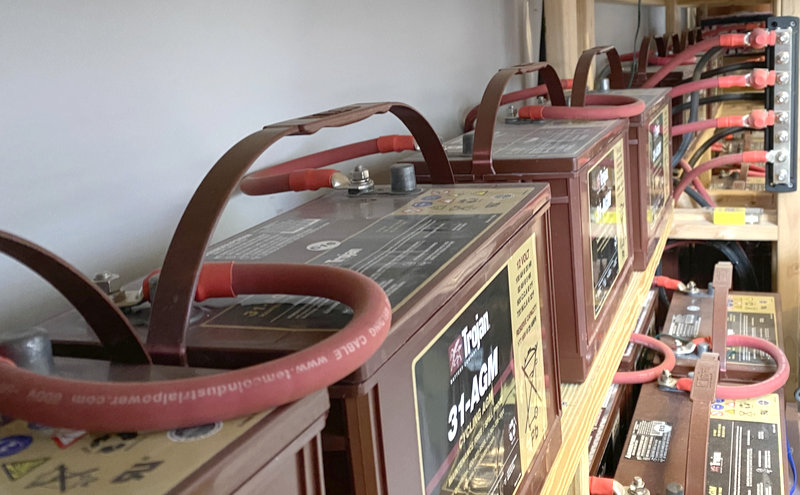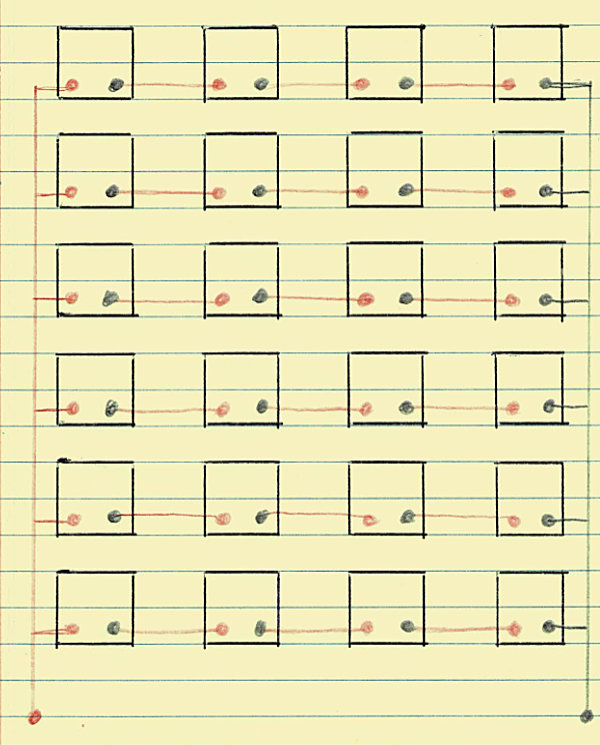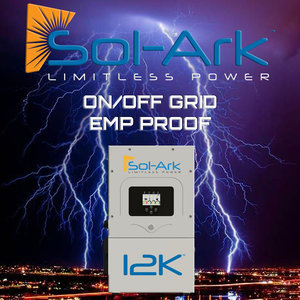How To Calculate Ah (Amp hours) and Wh (Watt hours) of a Battery Bank

I will use my own off-grid battery bank for this example how to calculate its total Amp hours and Watt hours.
I’m not going to get into the little details and caveats. But this will provide a quick overview to figure it out. Maybe it will provide some insight for your own alternative energy battery bank one day.
Okay, lets go…
My objective was to put together a 48 volt battery bank (this is DC volts we’re talking about) with enough Watt hours (kWh – kilowatt hours) of energy storage to at least operate my essential systems for a few days before requiring recharge. I utilize an approximate 4000 watt solar panel array to recharge by way of a charge controller followed by a DC > AC inverter system.
Why 48 volts? Because it’s more efficient (than say, 12 volts), less loss, less current, and most off-grid inverters like to chew on 48 volts…
So, there are all sorts of battery types and voltage configurations. I’m not going to get into all that. Instead, I’m going to use 12-volt batteries in this example because that’s what I used on this particular battery bank.
My batteries are 12 volts each and rated for 100 Ah each (amp hours). What about the Amp hour rating? Put simply, you might say that this battery (if drained down to ‘dead’) will provide 1 amp for 100 hours. Or 20 amps for 5 hours. Depends how you look at it… You get the picture?
(Well, technically a fully charged 12-volt battery while at rest, no load, would be 12.7 volts. But I’m not getting into that sort of detail with this general principle.)
[ Read: Battery State of Charge ]
Volts times Amps equals Watts. So this one battery will provide 12 x 100 = 1200 Watt hours. Or 1.2 kWh (kilowatt hours) of energy.
To get to 48 volts, I strung (connected) four batteries in series. So that string provides 48 x 100 = 4800 or 4.8 kWh of energy.
I put together 6 strings of 4 batteries in series. Then I wired all six of those strings in parallel with each other. So that made 6 x 4800 = 28800 or 28.8 kWh of stored energy.
I sketched out a simple block diagram to illustrate my battery bank:

These are lead acid type batteries. Although more specifically they are AGM (Absorbent (or Absorbed) Glass Mat (or Material)) so I can keep them indoors without off-gassing.
All batteries have a cycle life versus depth-of-discharge curve. The deeper you regularly discharge them, the sooner they’ll die off. These parameters vary quite a bit depending on the specific battery type / chemistry which I won’t get into here. But I just wanted you to know that.
Given my specific battery type, I avoid discharging them further than 30% off the top (30% DOD or depth of discharge). This greatly helps with overall cycle life of the battery bank in my case.
So that means I will try not to use more than 30% of 28.8 kWh, or, about 9 kWh of energy for my given battery bank before recharging.
That’s enough to provide me with a few days of “juice” for my essentials, such as my furnace during winter (also tied with my hot water), refrigerator, chest freezers, and well pump.
We have lots of cloudy winter days here, so it works out pretty good. During summer I have “tons” of energy, so I run my whole house (including air conditioners) on the system. Although the AC’s go off at night (power hogs).
Okay, that was just a quickie on figuring out battery bank Amp Hours and Watt Hours.
And now is a good time to plug our sponsor, Sol-Ark.com, who will gladly help you with your ON / OFF GRID design and choice of Charger / Inverter. They have several excellent models! Let them know you came from Modern Survival Blog if you contact them :)

